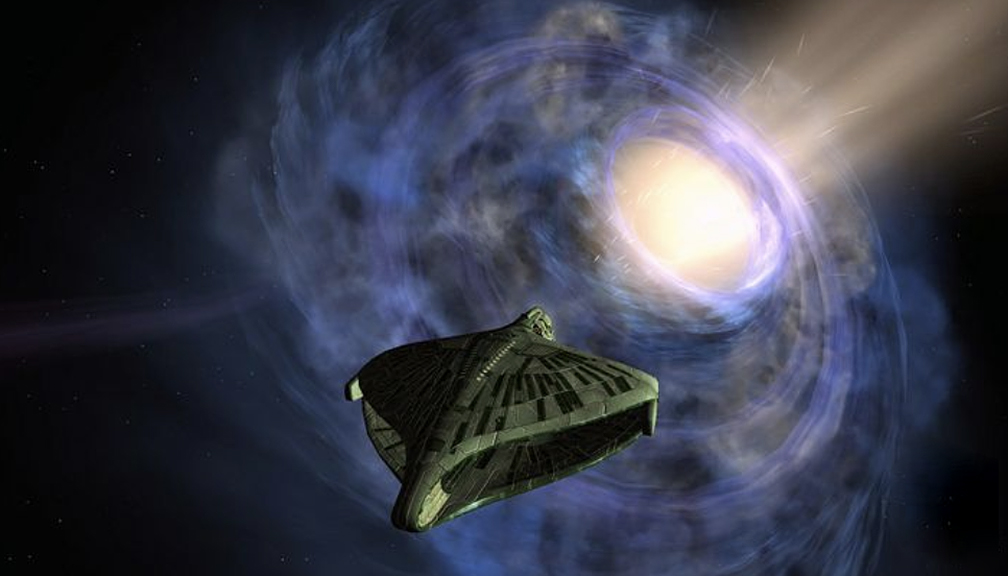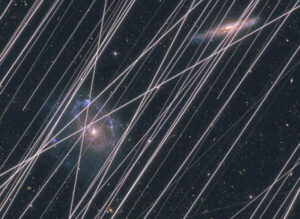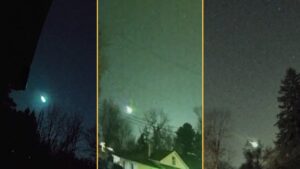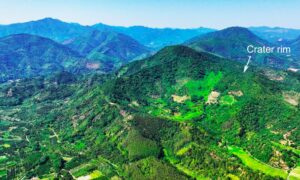Back in the prehistoric days of theoretical astrophysics (1985), in a mystical and exotic corner of planet Earth (Fresno, California), a man sat in the back of a car and tried to break the spacetime continuum. His name was Kip Thorne: future scientific consultant on the movie Interstellar, future Nobel Prize winner, and all-around geek.
While he was a respected and innovative theoretical physicist, Thorne had not yet garnered a reputation as the mathematical mind behind some of science fiction’s trickiest plot points. He was, instead, known for his deft familiarity with Einstein’s equations of general relativity, a flexible set of conditions for how space and time interact. His friend Carl Sagan had called him up for help in solving a problem in his in-progress novel Contact, about radio astronomers who connect with interstellar beings.
Sagan, a science communicator by trade but an astrobiologist by training, needed Thorne’s expert eye for the finer points of general relativity. He needed his heroine to get from the Earth to Vega, a journey of 26 light-years. And he needed her to get there fast.

It’s impossible to visit the Very Large Array in Socorro, New Mexico, without hearing that ‘Contact’ was filmed there. Photo: Warner Bros
Hyperspace
His initial treatment featured her plunging into a black hole, which carried her on a shortcut through hyperspace to Vega. Hyperspace isn’t just a convenient term for hand-wavy science fiction authors. It’s a real geometric concept describing space that occupies more than three dimensions. In short, Sagan’s protagonist might travel through a fourth dimension, along a route where the distance from Earth to Vega is much less than 26 light-years.
Thorne wasn’t having it. After all, all the matter and light that crossed the event horizon of the black hole would congregate at the singularity, accelerated to ultrarelativistic speeds.

Kip Thorne. Photo: Nobel Media
“The calculations were unequivocal,” Thorne wrote in Black Holes and Time Warps. “Any vehicle for hyperspace travel gets destroyed by the explosive ‘rain’ before the trip can be launched. Carl’s novel had to be changed.”
He proposed something even spacier than black holes: wormholes.
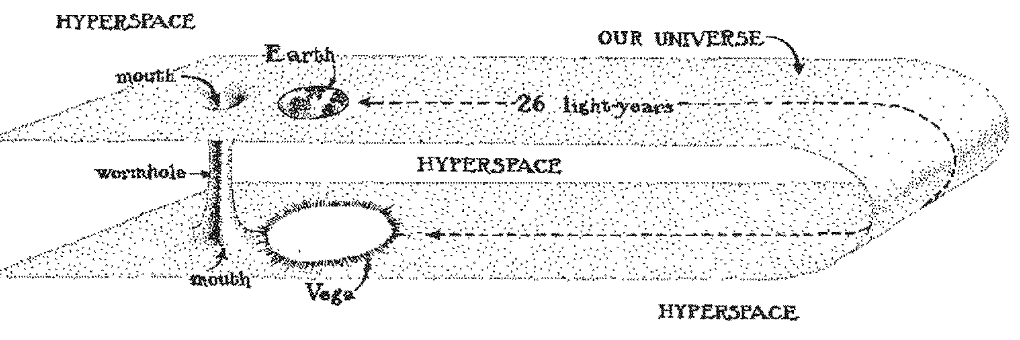
A two-dimensional version of a wormhole, where ‘hyperspace’ exists in the third dimension. Photo: Kip Thorne
The temptation of wormholes
“If this FTL drive isn’t fixed soon, we’re dead!”
That’s Captain Lee Adama on Battlestar Galactica, and as much as they reference it, the show never explained exactly how their faster-than-lightspeed (FTL) drive actually worked. They’re not the only ones. Most science fiction properties lean on an implication of hyperspace tunnels, or wormholes.
In Hitchhiker’s Guide to the Galaxy, most ships travel via hyperspace expressways. In Martha Wells’ Murderbot series, the sardonic main character hitches rides through wormholes, although how these wormholes form or operate is left up to the imagination. Other authors, like CJ Cherryh, try to throw in a bit more of a theoretical physics vibe, with phrases like “Einstein-Rosen bridge.” That’s just a fancy name for a wormhole.

Battlestar Galactica’s rendition of what the FTL drive control system looks like is what I would design if someone told me to come up with a user interface that no one could use. Photo: Sci-Fi Channel
The truth is that although FTL travel is the backbone of science fiction, no one has figured out how it might actually work. Kip Thorne’s proposition of wormholes, though, shaped the genre for decades.
The tempting thing about wormholes is that they are, in fact, a mathematically sound solution to Einstein’s equations. It is absolutely possible for a tunnel to exist between two points in space such that the distance inside the tunnel is shorter than outside. What’s not so clear is how such an object could form, or how it could stay open if it did.
The problem with wormholes, Part I
What Thorne struggled with in the backseat of a car in 1985, trying to fix Carl Sagan’s plot, is that wormholes don’t want to be used for interstellar travel. Previous physicists found that they have a fatal flaw. All the matter that passes through a wormhole causes it to gravitationally contract. Right after forming, it closes. Nothing gets all the way through.
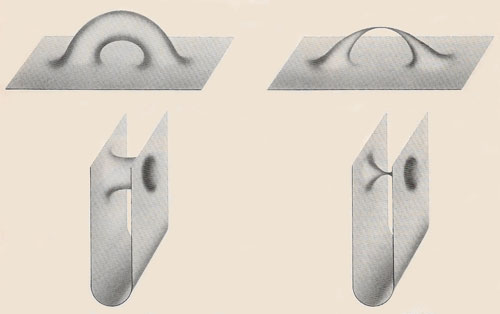
Wormholes close almost as soon as they form. Photo: David Daring
This is called pinching, and Thorne needed to avoid it for Carl Sagan’s sake. He calculated that the only way around pinching is to coat the inside of the wormhole with “exotic matter.” Exotic matter has a negative energy density from the perspective of light passing through the wormhole.
When traveling at light speed, Einstein’s equations result in strange effects, and one of those is that negative energy density isn’t technically forbidden.
Thorne’s conjectures inspired a flurry of papers on exotic matter and whether it could coat a wormhole. The results, to this day, are inconclusive. We do know that exotic matter actually exists, at least near black holes, where the event horizon disrupts energy fluctuations in a way that favors negative energy density. The same occurs when two uncharged plates approach one another. But we don’t know whether such matter would stay exotic on the inside of a wormhole.
For Contact, Thorne was content to skip over the finer details of how the Vega aliens coat their wormhole with exotic matter. But academically, he and his collaborators were only getting started.
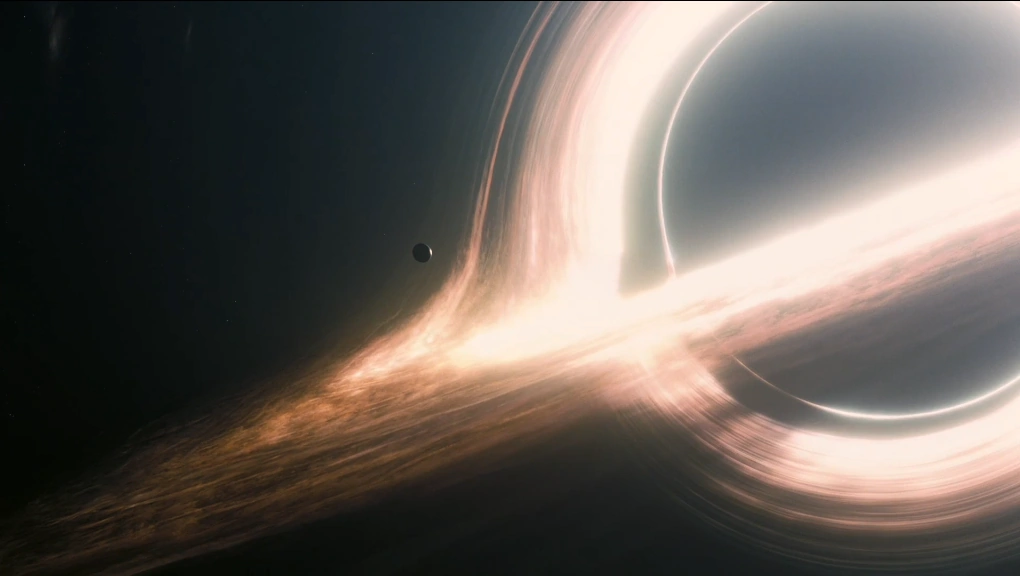
The movie Interstellar provided some of the best-ever simulations of black holes by giving Kip Thorne access to Hollywood’s financial and computational resources. Photo: Warner Bros/Paramount
The problem with wormholes, Part II
Say we have exotic matter. Say we can use it to coat the insides of a wormhole so that the sides repel each other and stay open. How do we go about finding a wormhole?
As bizarre as black holes seem, they have a perfectly reasonable origin story. When massive stars get very heavy and can no longer hold themselves up against their own gravity, they collapse into an infinitesimally small point. That’s a black hole.
But there’s no similar mechanism for the formation of wormholes. At least, not for those large enough to allow travel. At the quantum level, Kip Thorne’s graduate advisor, John Wheeler, laid the groundwork for wormhole formation back in the 1960s. He predicted that at very, very small scales, all spacetime should froth and bubble. Based on a fundamental theorem of quantum physics called the Heisenberg Uncertainty Principle, this “quantum foam” might form very small wormholes every second and annihilate them the next.

An artist’s impression of quantum foam. The scale of this image is about 1/10^35 of a centimeter. Photo: APS
So can one forcibly enlarge a wormhole from the quantum to the classical regime? The answer lies in the realm of quantum gravity — an enduring and unobtained Holy Grail in theoretical physics.
That’s a no-go.
How wormholes imply time travel
Let us create a wormhole through unspecified quantum mechanical processes. Despite its immaculate conception, free of the bizarre time effects plaguing other proposed creation mechanisms, it will still succumb to the temptation of time travel.
The classic example, first conceptualized by Kip Thorne shortly after his contact with Contact, banks on an effect called time dilation. When objects move very close to the speed of light, the time that the object experiences flows more slowly than the time of a stationary observer. Think of Ender’s Game, in which the protagonist skips forward 2000 years between the first two books because of how much time he’s spent on very fast spaceships.
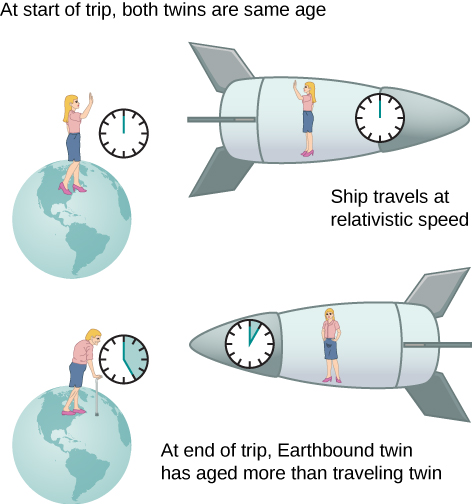
The twin ‘paradox’ handily describes the effects of time dilation. Current Arizona senator Mark Kelly and his twin brother Scott Kelly both flew in space on different missions, though, and the universe didn’t break. Photo: UCF
If Ender takes one end of a wormhole with him on his spaceship and leaves the other end on Earth with his sister Valentine, the wormhole will connect his sister to his time frame. Say he spends 10 months on a round-trip voyage and winds up back on Earth where he started. Then 10 months after his departure, Valentine can look through the wormhole and see him back on Earth.
But say that thanks to time dilation, from Valentine’s perspective on Earth, Ender’s trip takes 10 years. When he finally returns to Earth, entering his side of the wormhole will return her to her side, 9 years and 2 months before.
More paradoxes
This is where all sorts of paradoxes come into play. What if, for instance, Ender uses this setup to journey 50 years into the past and kill his own grandfather? The world misses out on one very enjoyable novel and quite a number of mediocre ones (sorry, Speaker for the Dead fans). Then no Ender would exist to go kill his grandfather, so his grandfather would live, and Ender would be born once more.
Bizarrely, that scenario actually makes perfect sense in a quantum mechanical world. The laws of quantum mechanics don’t predict outcomes, just the probability of different outcomes. Attempting to understand what that actually means is an entire branch of physics called quantum foundations. It leads to elegant but unsettling theories such as Hugh Everett’s “many-worlds” theory of splitting timelines. Each time a quantum mechanical system is tested, Everett proposes, the universe settles into one of many possible timelines, branching constantly.
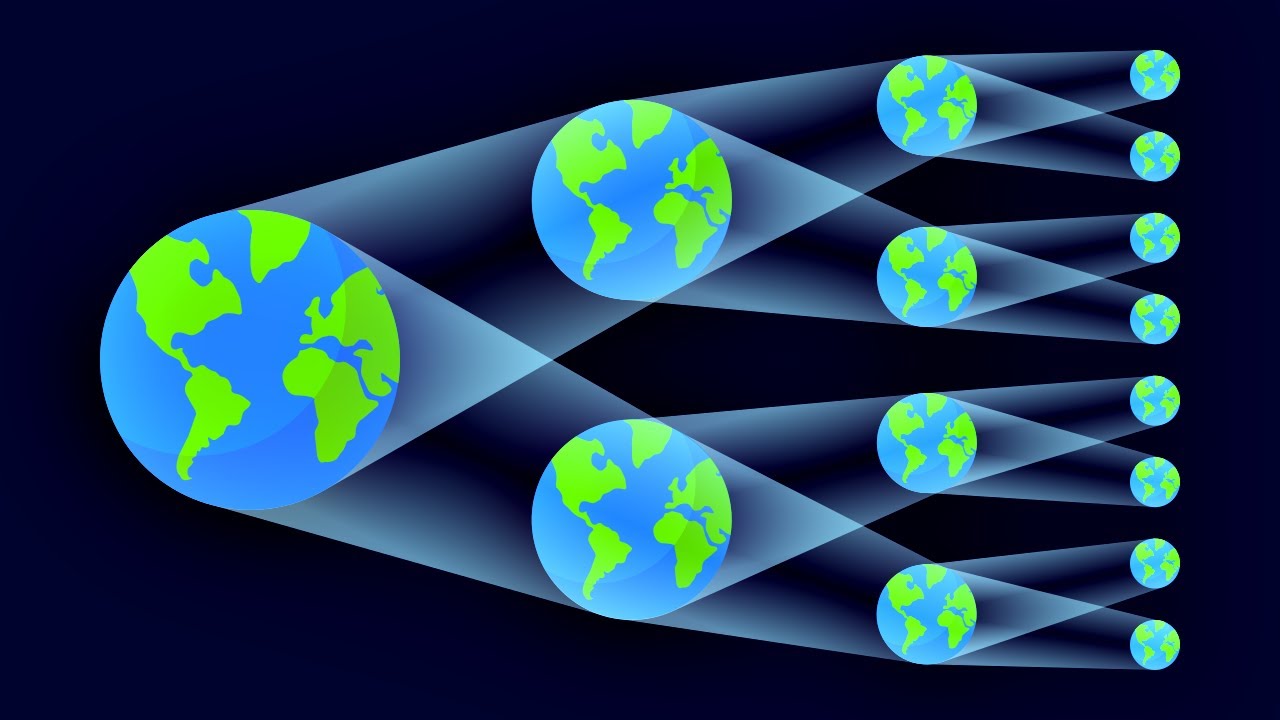
Everett’s vision of quantum mechanics features astounding numbers of branching universes. Photo: Veritasium
This fits in nicely with the grandfather paradox. There is some probability that a man arrives out of nowhere and murders Grandfather Wiggin in his youth. There exists some other probability that Grandfather Wiggin carries on happily, eventually allowing Ender to be born and travel backward in time. When the moment comes for him to die, the universe makes a choice. We lift the lid and peer in on Schrodinger’s grandfather: either he’s alive or dead, but a second ago, he was both.
Why time travel (probably) can’t exist
So, as far as we can tell, under the basic principles of quantum mechanics, time travel isn’t as obviously a no-go as one might assume.
Yet we know of at least one mechanism by which any wormhole acting as a time machine might destroy itself. Kip Thorne, his graduate student Sung-Won Kim, and Stephen Hawking calculated that the same kind of quantum foam present in all space might build up inside a wormhole, destroying everything inside it and causing it to pinch shut.
The keyword here is might. We don’t know enough about quantum gravity to say whether it would.
Hawking hypothesized that the universe would protect itself from time travel to avoid the manifestation of quantum phenomena on a human scale. More importantly, he wrote, this would “make the universe safe for historians.”
He tested his theory in 2008 by hosting a party for time travelers. The day after the party, he sent out the invitations. No one showed up.
A majority of physicists agree with his conjecture. But to this day, no one can conclusively resolve it. That would require a working theory of quantum gravity. We’re a long way away from that — unless anyone from the future wants to help us out.
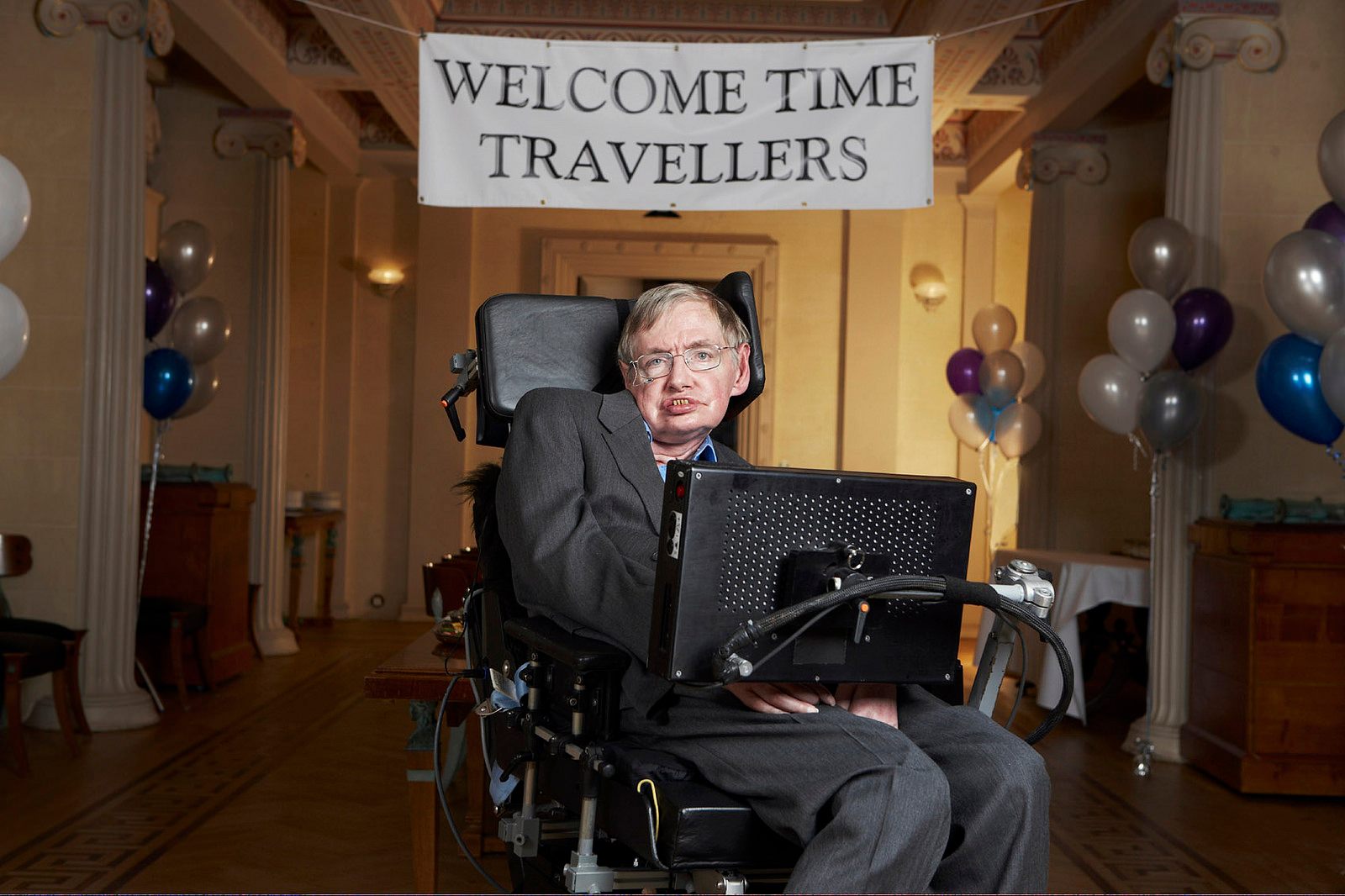
Stephen Hawking set up balloons and everything. Photo: LWP Kommunikáció
